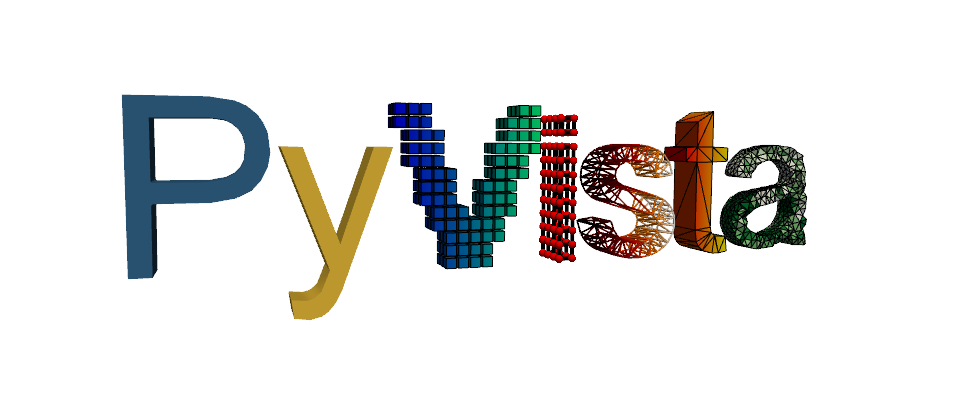Note
Go to the end to download the full example code. or to run this example in your browser via Binder
Creating a Uniform Grid#
Create a simple uniform grid from a 3D NumPy array of values.
import numpy as np
import pyvista as pv
Take a 3D NumPy array of data values that holds some spatial data where each
axis corresponds to the XYZ cartesian axes. This example will create a
pyvista.ImageData that will hold the spatial reference for
a 3D grid by which a 3D NumPy array of values can be plotted against.
Create the 3D NumPy array of spatially referenced data. This is spatially
referenced such that the grid is (20, 5, 10), (nx, ny, nz).
values = np.linspace(0, 10, 1000).reshape((20, 5, 10))
values.shape
Create the ImageData
grid = pv.ImageData()
Set the grid dimensions to shape + 1 because we want to inject our values
on the CELL data.
grid.dimensions = np.array(values.shape) + 1
Edit the spatial reference.
grid.origin = (100, 33, 55.6) # The bottom left corner of the data set
grid.spacing = (1, 5, 2) # These are the cell sizes along each axis
Assign the data to the cell data. Be sure to flatten the data for
ImageData objects using Fortran ordering.
grid.cell_data["values"] = values.flatten(order="F")
grid
Now plot the grid!
grid.plot(show_edges=True)
Don’t like cell data? You could also add the NumPy array to the point data of
a pyvista.ImageData. Take note of the subtle difference when
setting the grid dimensions upon initialization.
# Create the 3D NumPy array of spatially referenced data again.
values = np.linspace(0, 10, 1000).reshape((20, 5, 10))
values.shape
Create the PyVista object and set the same attributes as earlier.
grid = pv.ImageData()
# Set the grid dimensions to ``shape`` because we want to inject our values on
# the POINT data
grid.dimensions = values.shape
# Edit the spatial reference
grid.origin = (100, 33, 55.6) # The bottom left corner of the data set
grid.spacing = (1, 5, 2) # These are the cell sizes along each axis
Add the data values to the cell data
grid.point_data["values"] = values.flatten(order="F") # Flatten the array!
grid
Now plot the grid!
grid.plot(show_edges=True)
Exercise#
Now create your own pyvista.ImageData from a 3D NumPy array!
help(pv.ImageData)
Generate example 3D data using numpy.random.random(). Feel free to use
your own 3D numpy array here.
arr = np.random.random((100, 100, 100))
arr.shape
Create the pyvista.ImageData.
Note
You will likely need to ravel the array with Fortran-ordering:
arr.ravel(order="F")
vol = pv.ImageData()
# Set attributes and data
Plot the ImageData
vol.plot()
Example#
PyVista has several examples that use ImageData.
See the PyVista documentation for further details on Volume Rendering
Here’s one of these example datasets:
from pyvista import examples
vol = examples.download_knee_full()
pl = pv.Plotter()
pl.add_volume(vol, cmap="bone", opacity="sigmoid")
pl.show()
vol = pv.Wavelet()
vol.plot(volume=True)
